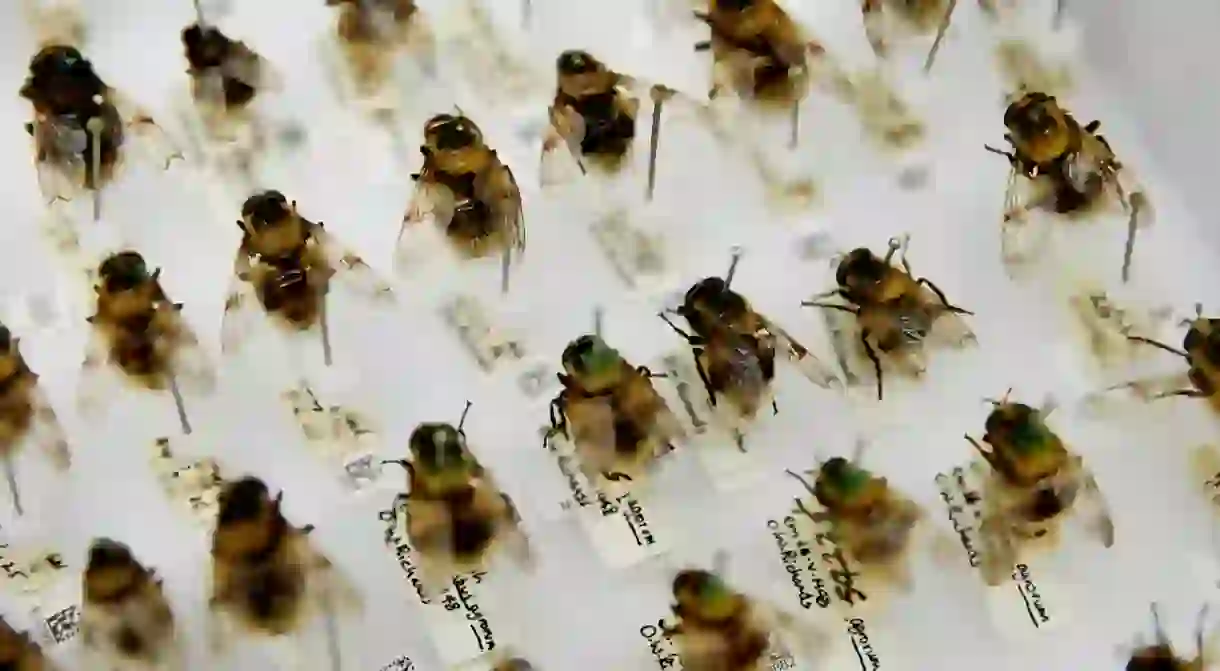What Can Centuries-Old Insects Tell Us About Climate Change?

Culture Trip took a behind-the-scenes tour at London’s Natural History Museum to see how the museum’s insect collection is being digitised to help researchers around the world track changes in insect populations.
Often insects are written off as unwelcome guests, their presence indoors marks a breech between civilisation and wilderness. There’s something about the skittering of legs that most people can’t seem to get comfortable with, but that is an attitude London’s Natural History Museum (NHM) is hoping to change.

In 2014, the NHM embarked on the ambitious project of digitising the museum. With 80 million different specimens in the museum’s collection, the project’s website lists the projected end-date as simply “ongoing”. At its current rate, it could take up to 200 years, meaning the project will outlive the people currently involved.

The ambitiousness of the digitisation comes into focus when you step out of the labyrinth of exhibition rooms and into the heart of the museum’s insect archives. The archivists’ desks resemble the kind of organised chaos one expects from brilliant minds.

The NHM aims to give researchers access to information that will help them track changes in insect populations which will also help determine how climate change has affected specific locations.

Senior Curator of Diptera, Erica McAlister and her colleague, Beulah Garner, Senior Curator of Coleoptera, are some of the curators in charge of the NHM’s collection of nearly 30 million insect specimens. Most of the specimens are located in industrial ceiling-high metal shelving units. “There are five floors of these,” McAlister says, “and that doesn’t even include ‘the pickles’” referring to the specimens preserved in alcohol as a part of the NHM’s Spirit Collection.

Housed in its own enclave rests the Rothschild’s flea collection. Over a century old, it contains over 500 species of flea, including the culprit of the bubonic plague, Xenopsylla cheopis. The original collector, Charles Rothschild, identified X. cheopis, or the Oriental rat flea, as a disease vector along with Karl Jordan in 1903.
The collection resides in bespoke wooden cabinets, stacked with drawers not much more than 1cm deep. Nestled into each compartment is an array of individual slides of fleas, each fastidiously catalogued with species, location and date on small handwritten labels.

This is how all the insect specimens are currently organised. McAlister and Garner are clearly familiar with the archive stacks, disappearing occasionally to dive in and retrieve more six-legged friends. Garner removes the glass covering from a box of tsetse flies, and points out one specimen missing its abdomen. “This one was caught with a knife.”

Each part of the collection is full of stories like this. While deep in the “pickles”, McAlister fishes out a minuscule vial. “These are the Ruxton Maggots,” she smiles. “They solved a double murder.” Garner and McAlister hope that the collection’s digitisation will make people aware of the impact that insects have on the human world.

Garner explains that the vastness of the NHM’s insect collection has made the museum’s curators somewhat “custodians of the world’s biodiversity”. While for some, it is hard to believe that shelves of dead insects are significantly interesting to anyone apart from the scientists who study them, the aim of the digitisation process is to increase awareness and interest in how significant insects are to life on earth.

Changes in insect populations are one of the first indicators of climate change. As humans continue to alter the earth’s surface and atmosphere, live insect populations demonstrate the effects of those changes on a micro level. The NHM’s insect archives give insight into where specific insect populations were located dating back nearly 300 years.

The digitisation will help the museum’s curators, and researchers around the world, to track changes in insect habitats. While most specimens are marked with labels that detail where they were found, access to that information has been limited to people with physical access to the NHM’s archives. In 2018, the NHM worked in partnership with Ecotourism and Conservation Society Malaysia (ECOMY) to digitise all of the NHM’s Malaysian specimens for an online museum.
The digitisation process looks different depending on the types of specimens. Louise Allan, Senior Digitiser of the Digital Collections Programme, and her team, demonstrated the processes for Culture Trip.

For large trays of slides, or pinned insects, boxes are placed under what looks like a giant microwave, where a mechanised camera takes a series of composite photos. The photographs are then placed together to create a comprehensive picture of the whole collection.
This process works great for specimens stored in slides, but for those that need more detailed imaging there is a different process. As Allan explains it, “A grasshopper just won’t look that remarkable if were only photographed from the top down.” These specimens are carefully lifted and placed in a light-box where they are photographed individually.

After the photos are taken, the species name, location, and date are added to the file information, the physical specimen is tagged with a barcode then stored back in the archives. The file goes up on the Museum Data Portal where anyone can access the information for free.

According to the NHM, “more than 13 billion records have been accessed in over 170,500 download events since April 2015. Through GBIF [Global Biodiversity Information Facility] we are also able to see which scientists are using our data in their publications. So far we have been cited in over 110 papers, covering topics from disease to climate, and from biodiversity discovery to food.”

The digitisation process is unlikely to be finished in any of our lifetimes, but with any luck, incoming technological advances in digital imaging will make the NHM’s goal of digitising the whole museum a more tangible reality.













